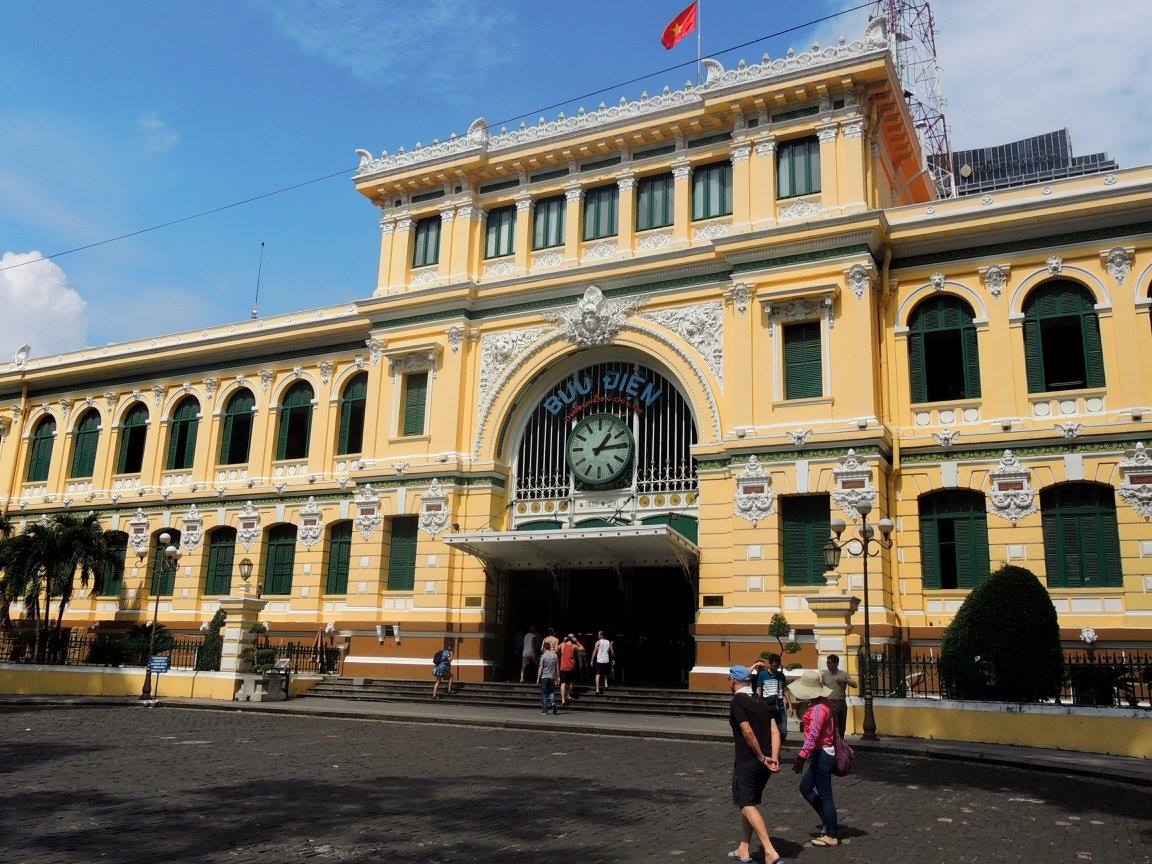This post is a continuation from Mekong Delta
Ho Chi Minh City (also known as Saigon) is relatively well off compared to its northern city counterparts. With its large stock of colonial style buildings from the period of French occupation, combined with modern developments, it exudes confidence.
There are plenty of reminders of the Vietnam War that lasted twenty years from 1955 to 1975. Museums contain relics of the spoils of war and graphic images and videos of the conflicts, much of it fascinating but confronting at the same time.
As it was the last stop on our tour, the tour company had arranged all meals for us, including a cooking class at Luke Nguyen’s Grain Cooking School. Like the other cooking schools and demonstrations we had attended during the trip, this was very informative about Vietnamese cuisine.
A highlight of the day in terms of the melding of cuisines was a Vietnamese version of crème caramel. Following is our adaptation.
Coconut Cream Caramel
On his website Luke Nguyen wrote about French influences: “This Vietnamese dessert, known as banh flan, was adapted from the French crème caramel. As there were traditionally no ovens in Vietnam, locals would steam the custard instead of baking it, resulting in a much silkier finish.”
This recipe makes six 100 ml moulds. (Double the quantities if required for 6 x 250 ml moulds; or 12 x 100 ml moulds. The small size is fine as a medium sized dessert, while the full size might be too large for some people.) Accompany with some fruit.
We have tweaked the recipe in two ways. First, we reduced the quantity of sugar in the cream mixture (but you can use more if you wish). Second, we have included an extra ingredient and step, using some kaffir lime leaves to provide an extra layer of flavours. We used the steaming method to cook; alternatively bake them in a water bath in the oven as per crème caramel if you wish. You can experiment by using another 50ml or so more of coconut cream.
Ingredients
For the caramel:
100 g caster sugar
50 ml water
For the cream:
75 to 100 g caster sugar
3 free-range eggs
215 ml coconut cream
100 ml milk
Optional: 3 kaffir lime leaves
Fruits:
Dice or chunks of strawberries, pineapple, or mango, or dragon fruit or papaya.
Method
To make the caramel, put the first amount of sugar in a saucepan. Without stirring, add water and bring to the boil over high heat. Cook for 5–8 minutes, or until the sugar syrup turns a golden caramel colour.
Carefully pour the caramel into six 100 ml caramel moulds or ramekins, using tongs to hold the moulds and swirling them around so the caramel coats the sides as well as the bottom.
To make the cream, first prepare a bamboo or metal steamer large enough to contain all the moulds, half-fill it with water and bring to the boil.
Add the milk to a small saucepan. Bruise the kaffir lime leaves with the blunt edge of a heavy knife, and add to the milk. Bring to a brief boil, then turn the heat right down to infuse for ten minutes or so. Check after five minutes, so that the flavour is not too strong. Remove the leaves.
Break the eggs into a bowl, add the remaining sugar and whisk well to combine. Shake the tin of coconut cream well, add coconut cream and milk to the eggs and mix thoroughly.
Pour the coconut mixture into the caramelised moulds. Place the moulds in the steamer, put the lid on and, importantly, reduce the heat to low. Steam for 40–45 minutes, or until the mixture sets. Check regularly as the caramels can easily overcook, giving a bubbled appearance when turned out of the moulds. To check if the caramel is set, tap a mould with your finger — the surface of the caramel should be firm and wobble slightly.
Once cooked, remove from the heat and allow to cool. Chill.
To serve, gently run a knife around the edge of each mould, turn upside down and allow the caramel to fall out onto a serving plate. Place the fruit around; dowse the fruit with a little lime juice if desired (especially if using papaya).
Equipment: Small saucepan, moulds, steamer (or water bath).
Degree of difficulty: 4/5 (reasonably difficult).
______________________________________________
This is the last post about our gourmet tour of Vietnam. For the first post see: Twelve Day Food Tour of Vietnam.











